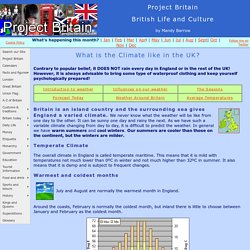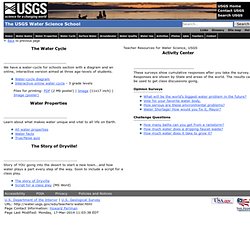

Nearpod. About This Lesson In this earth science lesson, students will learn the parts of a volcano, as well as how to tell if a volcano is active, dormant, or extinct.

The students will explore several volcanoes from around the world to emphasize how they work. This lesson is best for grades 2-6 and will take approximately 45 minutes to complete. During this lesson, the students will learn the parts of a volcano and what happens during an eruption using diagrams and videos. The students will explore the different stages of volcanoes by doing virtual field trips to several types of volcanoes. How to Classify Volcanoes About This Lesson In this earth science lesson, students will learn the parts of a volcano, as well as how to tell if a volcano is active, dormant, or extinct. GOING GREEN! (Earth Day song for kids about the 3 R's- Reduce, Reuse, and Recycle! Free Presentations in PowerPoint format for Earth Day Every Day, Keeping the Planet Green PK-12. - - Learn More - Our Changing Planet - UMAC. Bemular - The Planets Song (Educational Kids Music & Video) Science Learning Space. Earth day is April 22, celebrated by people around the world to support environmental protection.

It was started in 1970 and is now celebrated in over 192 countries every year as a way to honor both the earth and the concept of peace. Here are fun activities you can do with your friends and family to learn more about earth, science, and the amazing home we live in: The Cloud Tracker is a super-cool way to track cloud cover on photo paper.Solar Cookies are a yummy way to use the power of the sun to cook dessert! Discover how GPS uses triangulation as you learn how to determine the epicenter and magnitude of EarthquakesThe Earth wouldn’t be here without the sun, so here’s how to view the sun safely without damaging your eyes.Did you know that you can track the rotation of the sun?
Paula Cademartori Spring Summer 2015. Planet Earth. Climate and Temperature Britain. Contrary to popular belief, it DOES NOT rain every day in England or in the rest of the UK!

However, it is always advisable to bring some type of waterproof clothing and keep yourself psychologically prepared! We never know what the weather will be like from one day to the other. It can be sunny one day and rainy the next. As we have such a variable climate changing from day to day, it is difficult to predict the weather. In general we have warm summers and cool winters. The overall climate in England is called temperate maritime. July and August are normally the warmest month in England. Around the coasts, February is normally the coldest month, but inland there is little to choose between January and February as the coldest month. Probably the best months to travel in England are May, June, September and October.
RainFall Rain is fairly well distributed throughout the year, with late winter/spring (February to March) the driest period and autumn/winter (October to January) the wettest. Animated guide: Hurricanes. Weather Activities - Temperature Converter - Kids Weather Activities. Au rythme des volcans. Comment fabriquer un volcan avec ses enfants.
The Guide to Rocks and Minerals. Geology in the Parks. Rocks are all around us.

They make up the backbones of hills and mountains and the foundations of plains and valleys. Beneath the soil you walk on and the deep layers of soft mud that cover the ocean basins is a basement of hard rock. What are rocks made of? Rocks are made up mostly of crystals of different kinds of minerals, or broken pieces of crystals, or broken pieces of rocks. Some rocks are made of the shells of once-living animals, or of compressed pieces of plants. We can learn something about the way a rock formed from by looking carefully at the evidence preserved inside. Where do rocks come from? Rocks are divided into three basic types, igneous, sedimentary and metamorphic , depending upon how they were formed.
Igneous rocks Igneous rocks (from the Greek word for fire) form from when hot, molten rock (magma) crystallizes and solidifies. Extrusive igneous rock. Rader's GEOGRAPHY 4 KIDS.COM - Earth Science Basics for Everyone! Education Resources for Primary (K-6) Grades. Teacher Resources: Water Science School (USGS) USGS Home Contact USGS Search USGS The USGS Water Science School Teacher Resources for Water Science, USGS The Water Cycle We have a water-cycle for schools section with a diagram and an online, interactive version aimed at three age-levels of students.

Files for printing: PDF (2 Mb poster) | Image (11x17 inch) | Image (poster) Water Properties Learn about what makes water unique and vital to all life on Earth. Free Teacher Resources. Bill Nye the Science Guy.